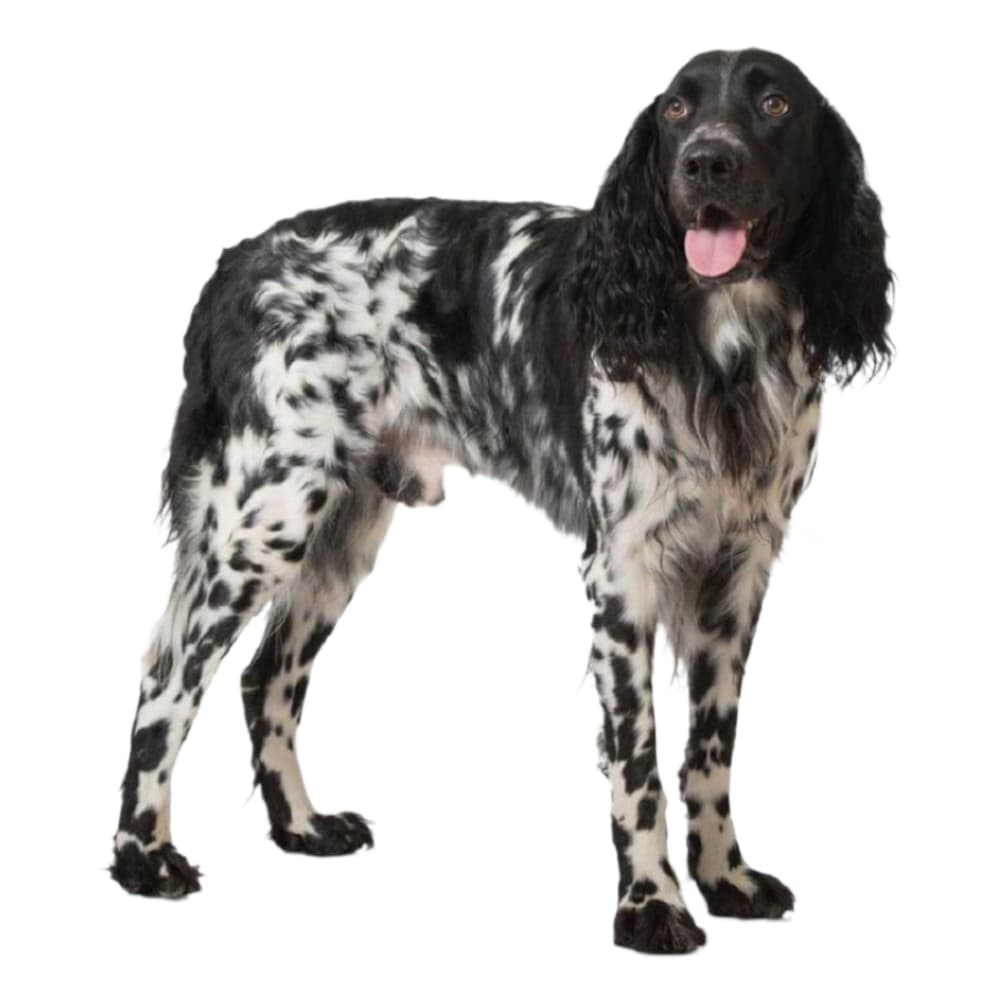Discover your dog's connection to this breed and 200+ others


Discover your dog's connection to this breed and 200+ others



The Large Münsterländer, also known as the Großer Münsterländer Vorstehhund, hails from Germany and is a versatile hunting dog breed. It shares its ancestry with the Small Münsterländer, both of which originated in the Münster region of Westphalia during the 19th century. They were bred by crossing long-haired pointing dogs with Setters and Spaniels to create a skilled and efficient hunting companion.
Large Münsterländer can suffer from black hair follicular dysplasia, color dilution alopecia, hyperuricosuria, osteochondritis dissecans (shoulder), progressive retinal atrophy (rcd4), and urolithiasis (cystine). As a larger breed they are at risk for developing orthopedic problems, such as hip and elbow dysplasia. Genetic testing is recommended, including for the following additional conditions: hyperuricosoria, degenerative myelopathy, and progressive rod-cone degeneration.
The Large Münsterländer is an intelligent, affectionate, and loyal breed. They are known for their strong work ethic and make excellent hunting dogs due to their pointing and retrieving instincts. Additionally, they tend to get along well with children and other pets, making them suitable family companions. However, they are active dogs that require regular exercise and mental stimulation to prevent boredom and potential behavioral issues.
A canine genetic lineage is a group of individuals or entire breeds that descended from common ancestors predating modern breed formation. Often these lineages are associated with a ‘type’ of dog with a unique historical working role and associated behaviors (e.g., herding, scent hunting, etc.).
The Pointer-Spaniel lineage encompasses both pointer and spaniel breeds. They were both bred for their specialized hunting abilities in Europe. Pointers locate game and freeze in a stance, called “pointing”, to indicate to their hunter that birds are close by. Spaniels were bred to find game in underbrush and retrieve it. Both pointer and spaniel breeds were bred to enhance their strong senses, trainability, and endurance as these are advantageous in a hunting partner. Spaniels and pointers are known for their strong work ethic, ability to work closely with humans and agility. These dogs’ ability to work closely with their hunters makes them an asset during a hunt because they follow direction well and know how their hunters want them to proceed.
Example breeds with ancestry from this lineage include English Cocker Spaniel, Irish Red Setter, and German Shorthaired Pointer.
In 1919, the German Longhaired Pointer Club stopped recognizing the black color variation, which lead to the creation of the Large Münsterländer as a new breed.
The Large Münsterländer boasts a beautiful, dense, and silky coat that is water-resistant and weatherproof. The coat is moderately long, with feathering on the legs, tail, and ears.
Famous in Hunting: The breed is highly prized for its exceptional skills in hunting, particularly for birds, and has become popular among hunters worldwide.
Longevity in Work: Large Münsterländers can maintain their hunting abilities well into their senior years, often proving to be accomplished hunters even in old age.
https://vgl.ucdavis.edu/breed/large-munsterlander
http://www.largemunsterlander.org/
https://www.ukcdogs.com/large-munsterlander
https://www.fci.be/en/nomenclature/LARGE-MUNSTERLANDER-118.html
Recommended by top vets with decades of experience
21 breeds
64 genetic health markers
50 genetic trait markers
